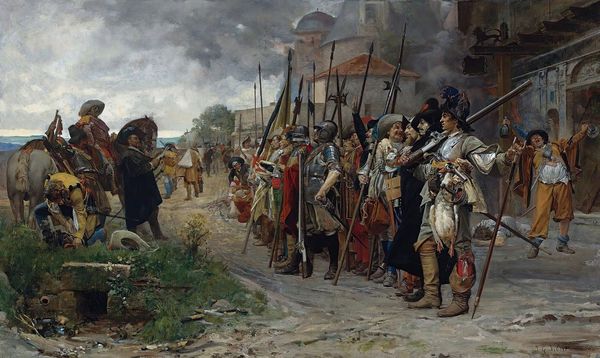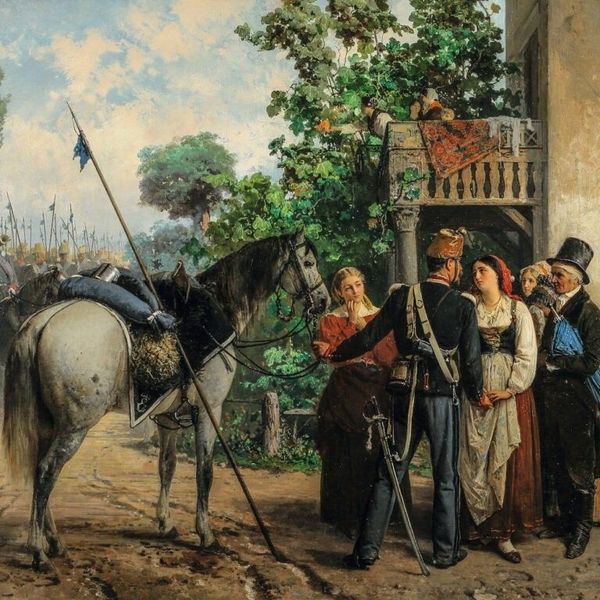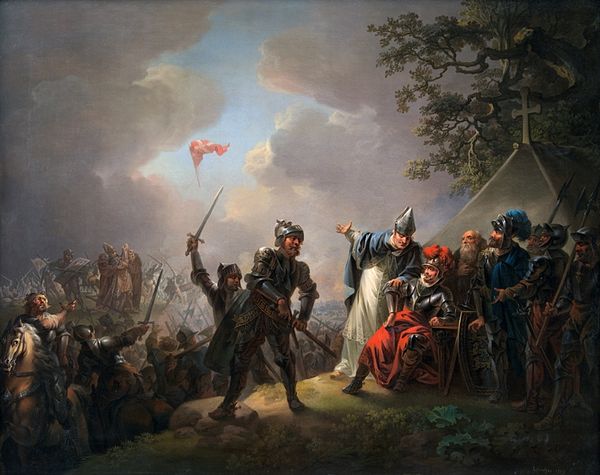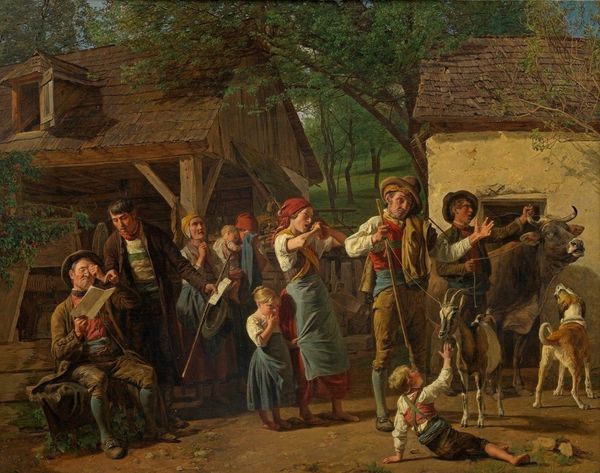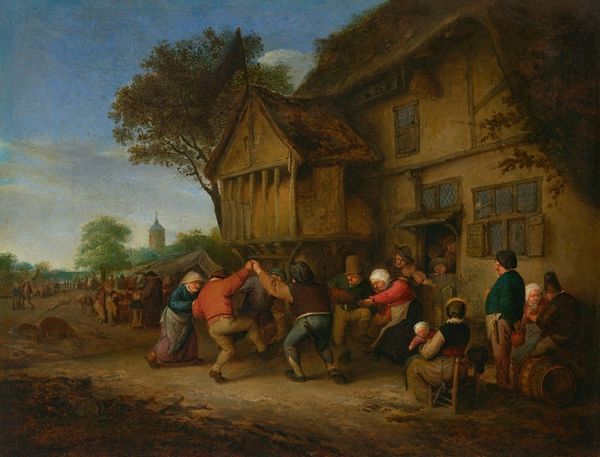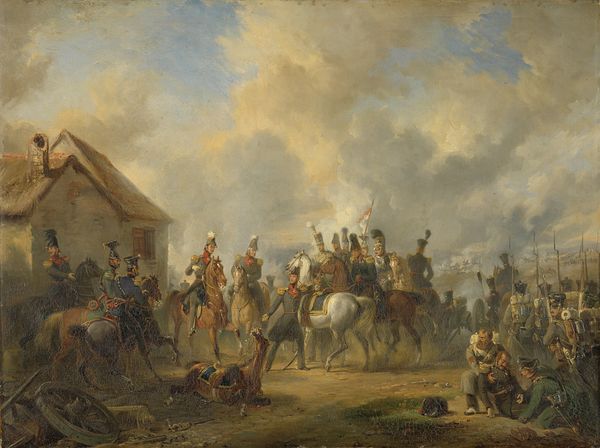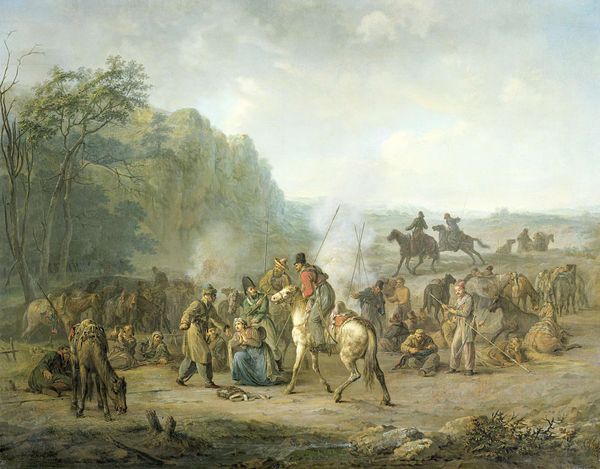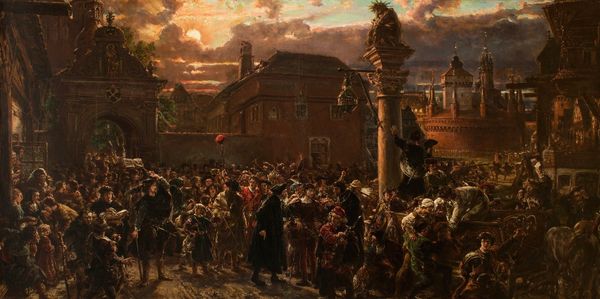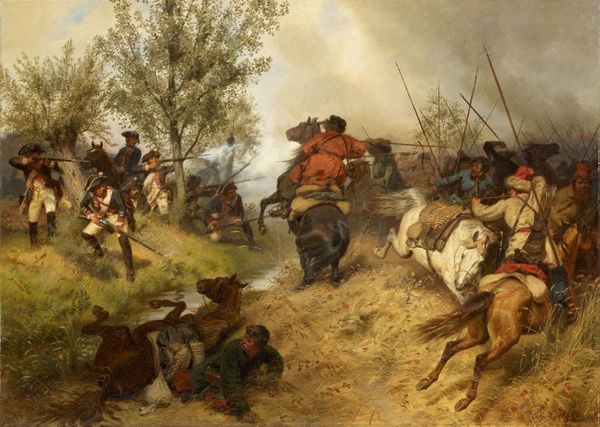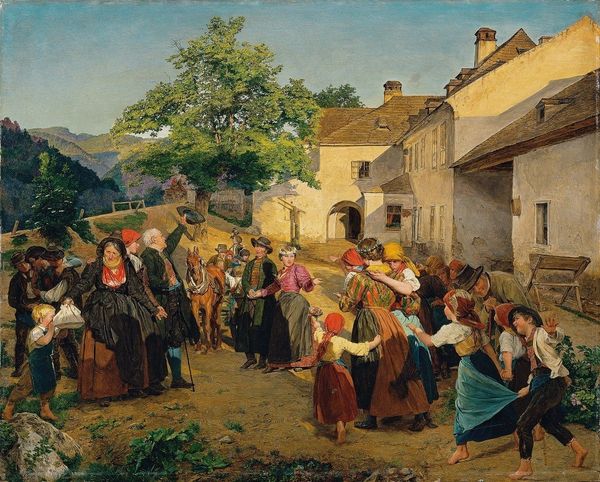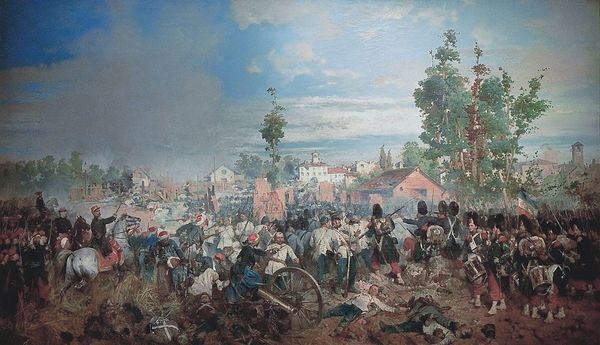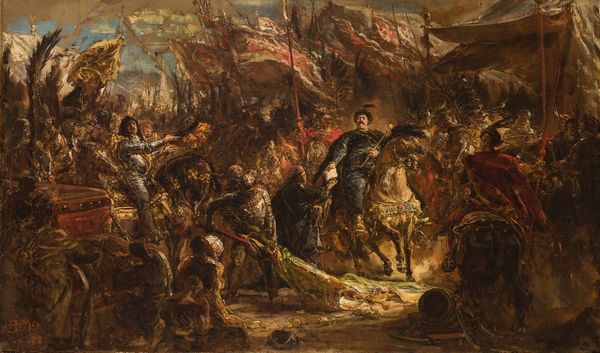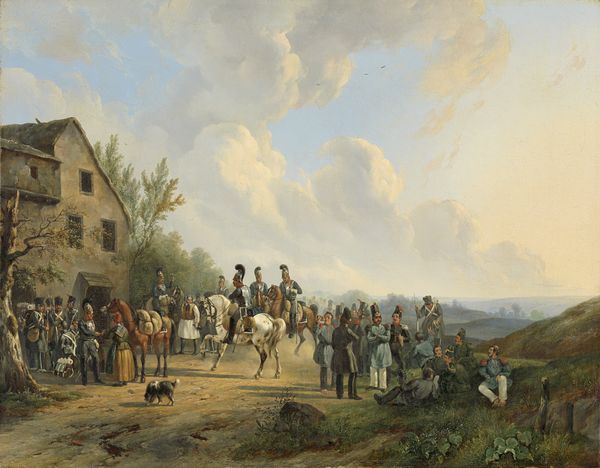
Copyright: Public Domain: Artvee
Curator: Looking at Franz von Defregger's "Das letzte Aufgebot," or "The Last Levy," from 1874, my first thought is that this scene seems saturated with tension, doesn't it? A gathering storm of anxiety hangs over these villagers. Editor: Indeed. The use of oil on canvas, while a traditional medium, contributes to the rich, almost palpable texture. The material choices are significant—oil paint allowed for layering and blending that creates the depth of emotion. And given the state's heavy investments into realist painting at this moment we may even ask, who invested in the creation of this piece and why? Curator: Good point. Considering its historical context, the title "The Last Levy" evokes a community preparing for a desperate, perhaps doomed defense. History-painting, yes, but what type? This work invites considerations of patriotism and potential sacrifice on a micro scale; the individual homestead mobilized, responding to crisis or external threat, perceived or imposed. Editor: And note how Defregger focuses on the implements in their hands - farm tools repurposed as weapons. It's about how people leverage the everyday, the immediately available resources, in moments of disruption. The scythe becomes a symbol of both labor and defense, blurring lines of demarcation. What were Defregger's processes for choosing these materials, one can even see him romanticizing rustic labour by using farm tools this way! Curator: Exactly, the narrative is deeply entwined with issues of political upheaval, in that period in Austro-Hungarian empire as it attempted to incorporate and suppress regionalism through militarization and new nationalism. Defregger also taps into a rising nationalist feeling that would become highly manipulated and exploited by authoritarian regimes. I want to consider more the impact this might have on society if one could even perceive this piece as dangerous agitprop or, alternatively, propaganda for the establishment, even in this era. Editor: From a materialist perspective, those textures you mention contribute so effectively, in bringing the viewer to reflect the immediate concerns of the figures represented here, to question our relationship to making and the relationship of rurality and society. It invites dialogue about what exactly we see, why Defregger invites our viewing and thinking, what it does not say... Curator: A fruitful consideration as always. Delving into how those issues interplay helps us perceive a deeper, more nuanced sense of art, of people, of place in time. Editor: Precisely, contextualizing the materiality in line with wider concerns encourages me to engage with its social context to form and reinforce its resonance today.
Comments
No comments
Be the first to comment and join the conversation on the ultimate creative platform.
